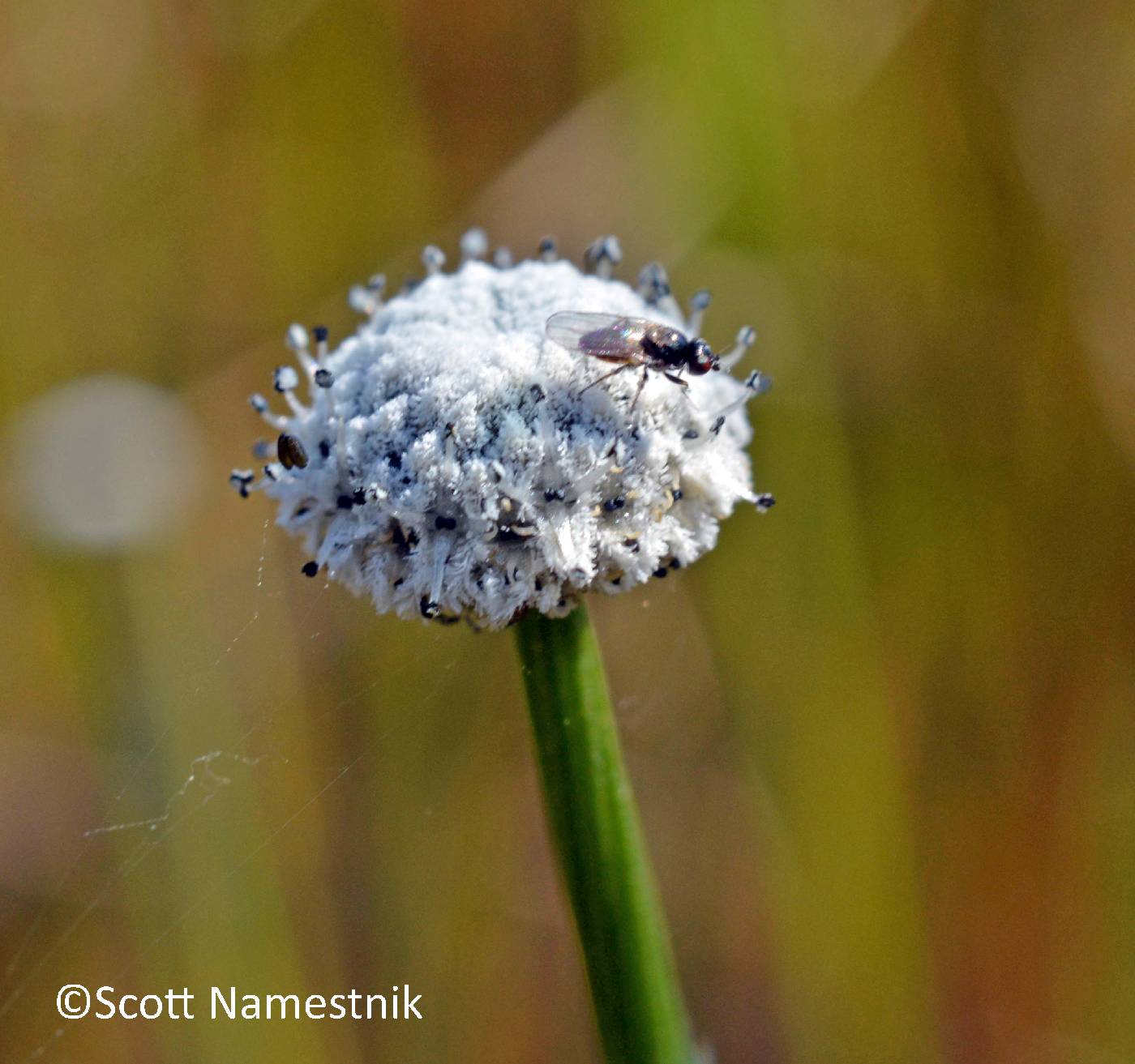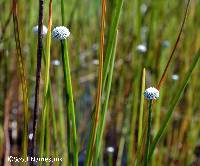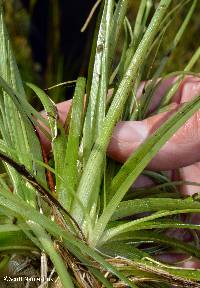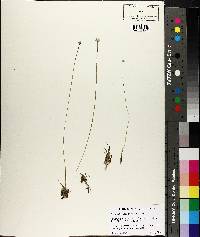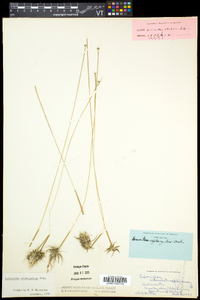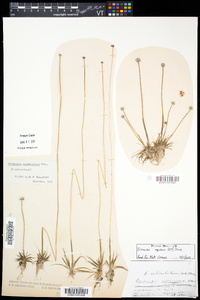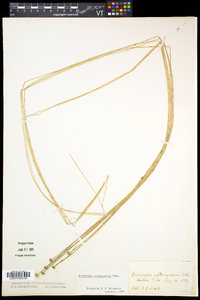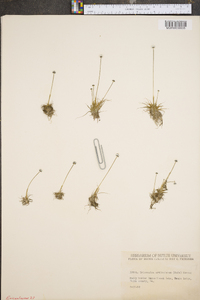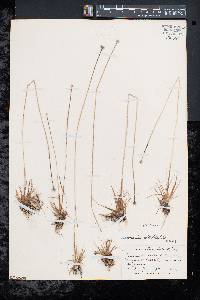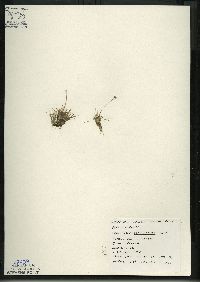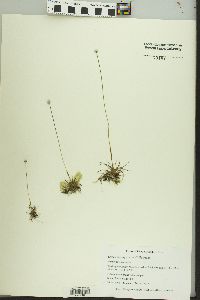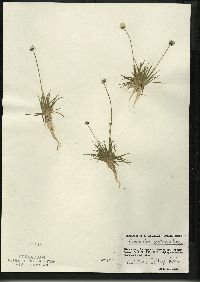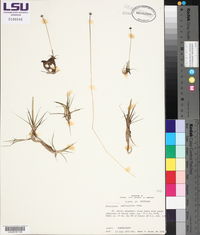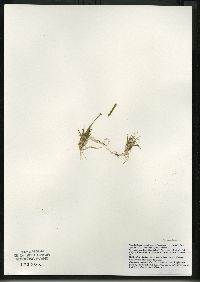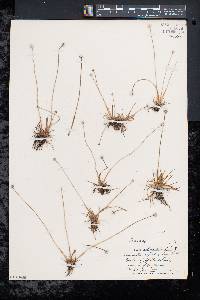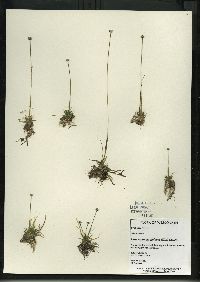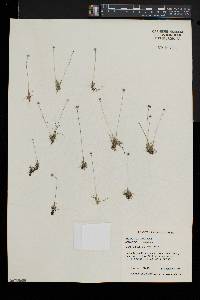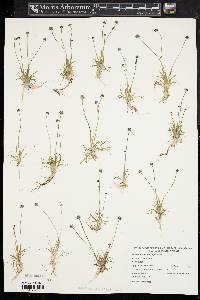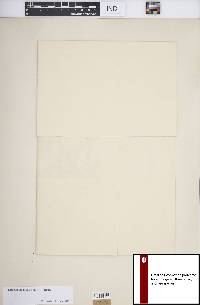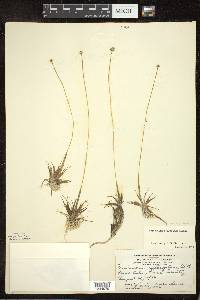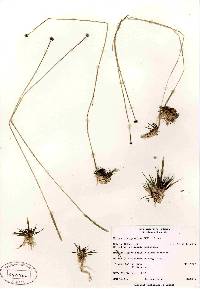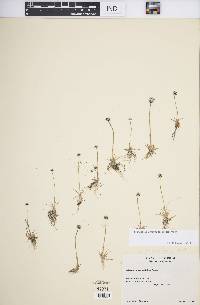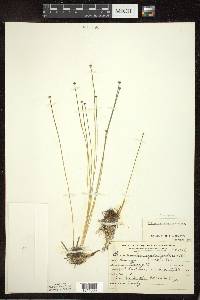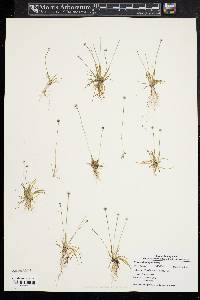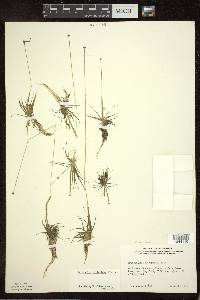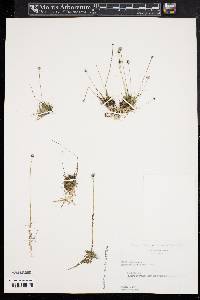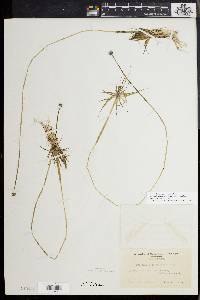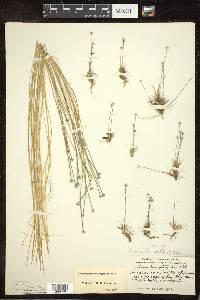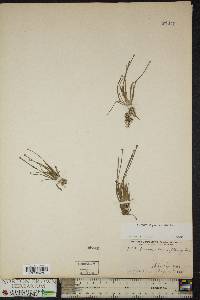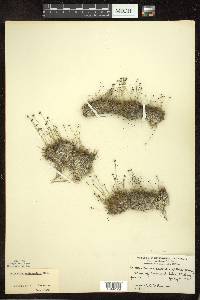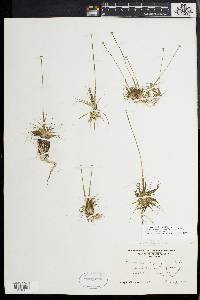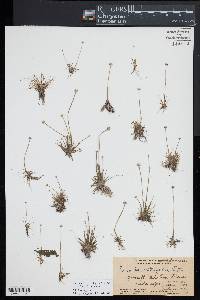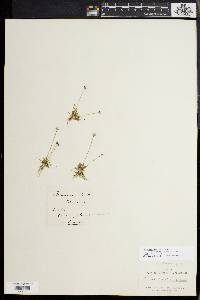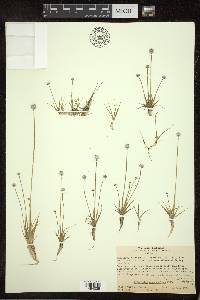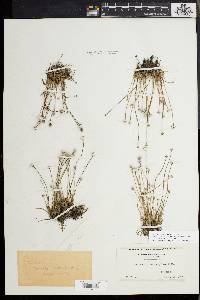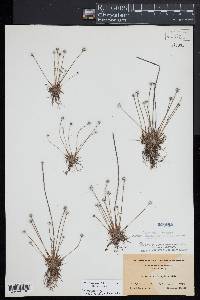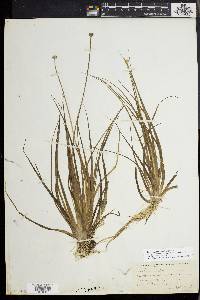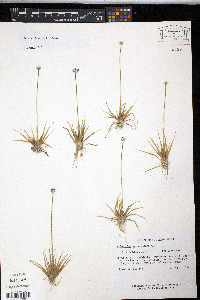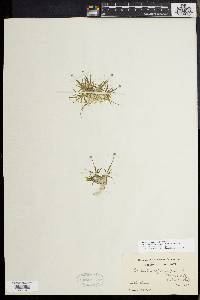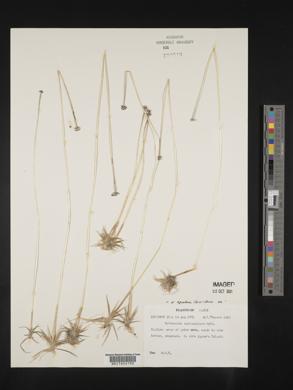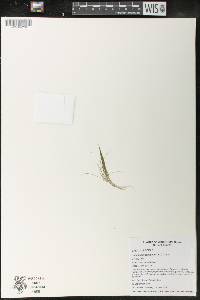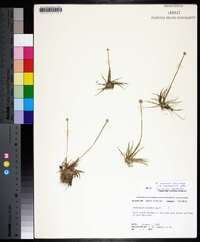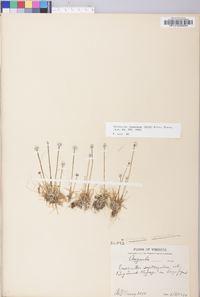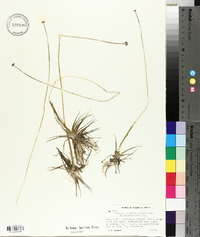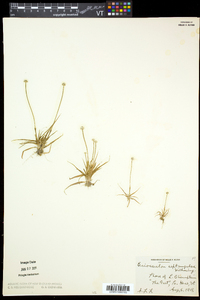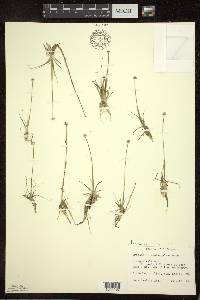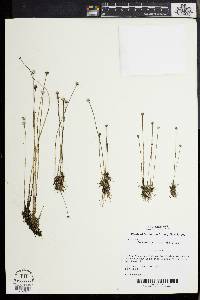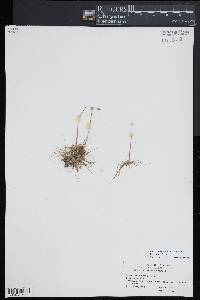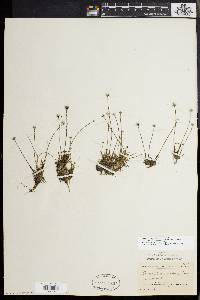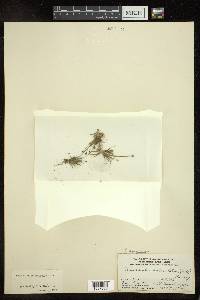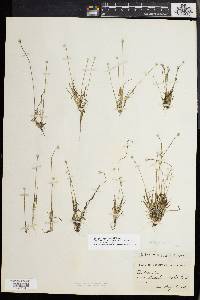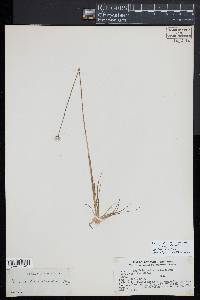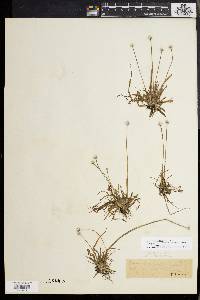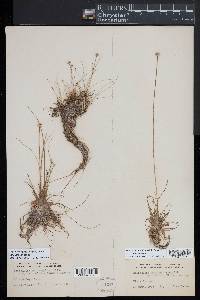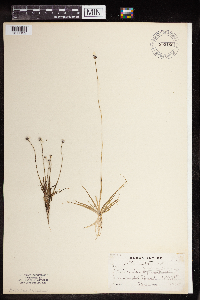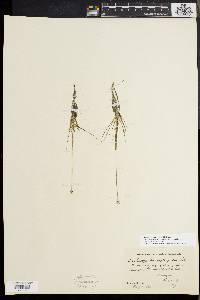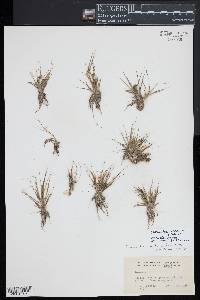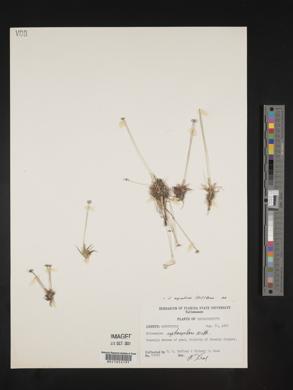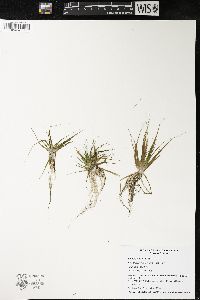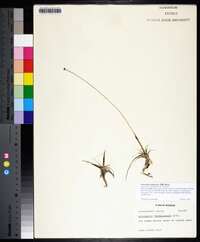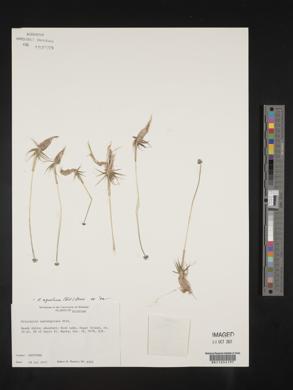
|
|
|
|
Family: Eriocaulaceae
Seven-Angle Pipewort, more...sevenangle pipewort
[Eriocaulon articulatum, moreEriocaulon pellucidum f. clausenii Moldenke] |
Herbs, perennial, 4--21 cm (--100 cm when submersed). Leaves linear-attenuate, 1--10 cm (--40 cm when submersed), apex often subulate. Inflorescences: scape sheaths longer (shores) or shorter (submersed) than principal leaves, inflated; scapes linear to filiform, 1 mm wide, (4--)5--7-ribbed; mature heads white to pale gray, young heads dark, hemispheric to globose, 4--10 mm wide, soft, flattened when pressed; receptacle glabrous or rarely with a few clear hairs; involucral bracts becoming reflexed, obscured by proximal bracts and flowers, dark gray, broadly oblong to narrowly ovate or broadly obovate, 1--1.5 mm, margins entire, apex rounded, abaxially with white, club-shaped hairs, otherwise glabrous; inner and receptacular bracts gray to near black, oblanceolate or cuneate, 1.5 mm, margins entire, apex acute, distal margins and abaxial apical surface with white, club-shaped hairs. Staminate flowers: sepals 2, grayish, oblong-linear or linear-oblanceolate, curved, 1.5 mm, apex acute to rounded, margins and abaxial surface with white, club-shaped hairs; androphore club-shaped; petals 2, triangular, nearly equal, 0.5 mm, ciliate, hairs white, club-shaped; stamens 4; anthers black. Pistillate flowers: sepals 2, gray, oblong to narrowly obovate, curved, keeled, 1.5 mm, blade usually ciliate, distal abaxial surfaces with white hairs; petals 2, pale, oblong-linear to linear oblanceolate, 1.5 mm, apex acute to obtuse, apically ciliate, adaxially with white, club-shaped hairs; pistil 2-carpellate. Seeds light brown or red-brown, ovoid to broadly ellipsoid, 0.5 mm, very faintly reticulate, not papillate. Flowering spring--fall. Sandy or peaty, often sphagnous, shores, bogs, muskegs, shallows; 0--600 m; N.B., Nfld. and Labr. (Nfld.), N.S., Ont., Que., Ala., Conn., Del., Ind., Maine, Md., Mass., Mich., Minn., N.H., N.J., N.Y., N.C., Ohio, Pa., R.I., Vt., Va., Wis.; Europe (Great Britain, Ireland). The name Eriocaulon septangulare Withering, widely used for this species, is invalid (H. N. Moldenke 1937). Some (T. G. Tutin et al. 1964--1980, vol. 5) retain E. aquaticum (Hill) Druce as the valid name if one accepts both North American and European plants as the same species (the alternative taken here). If North American plants are considered to be distinct from Eurasian ones, then the appropriate binomial for ours becomes E. pellucidum Michaux.
Perennial emergent aquatic 3 - 20 cm tall (taller in deep water) Leaves: submersed, basal, 2 - 10 cm long, 2 - 5 mm wide, grass-like, with three to nine veins. Inflorescence: a knob-shaped head, white to pale gray, to 1.5 cm wide, atop a long, five- to seven-ridged leafless stalk. Flowers: either male or female, borne on the same plant (monoecious), about 2 mm long. Sepals two, grayish, curved. Petals two. Stamens four. Seeds: light brown to reddish brown, 0.5 mm long, egg-shaped to broadly elliptic. Similar species: Eriocaulon aquaticum is the only representative of the family Eriocaulaceae in the Chicago Region. It is quite unmistakable in bloom. Flowering: late July to mid-August Habitat and ecology: Very rare in the Chicago Region on lake and pond borders. Prefers still water and calcareous soil. It is common and widespread in other parts of its range. Occurence in the Chicago region: native Etymology: Eriocaulon comes from the Greek words eerion (wool) and kaulos (plant stem). Aquaticum means "growing in or near water." Author: The Morton Arboretum Lvs very thin, often pellucid, 2-10 cm נ2-5 mm, 3-9- nerved with conspicuous cross-veinlets, tapering evenly from a pale, spongy-aerenchymatous base; scapes usually solitary for each rosette, 3-20 cm (or much longer in deep water), slender, slightly twisted, 5-7- ridged; mature heads subglobose, 4-6 mm thick, gray except for the exserted white-hairy tips of the tep and receptacular bracts; invol bracts ovate to obovate, obtuse, lustrous dark gray, glabrous, reflexed and concealed at maturity; receptacle glabrous; 2n=32. Usually in shallow water, occasionally in deeper water or on miry shores; Nf. to Minn., s. to Del. and Ind., and in the mts. to N.C.; also in Ireland and Scotland, where 2n=64. July-Sept. (E. articulatum; E. pellucidum; E. septangulare) Gleason, Henry A. & Cronquist, Arthur J. 1991. Manual of vascular plants of northeastern United States and adjacent Canada. lxxv + 910 pp. ©The New York Botanical Garden. All rights reserved. Used by permission. From Flora of Indiana (1940) by Charles C. Deam Local but common where found, in shallow water on the borders of lakes, usually in marly soil. ...... Indiana Coefficient of Conservatism: C = 10 Wetland Indicator Status: OBL |
This project was made possible in part by the Institute of Museum and Library Services [MG-70-19-0057-19].
Powered by Symbiota

